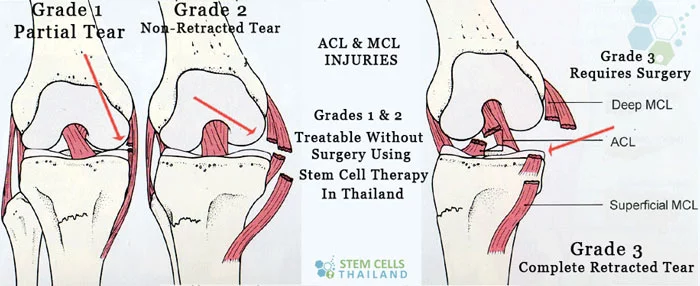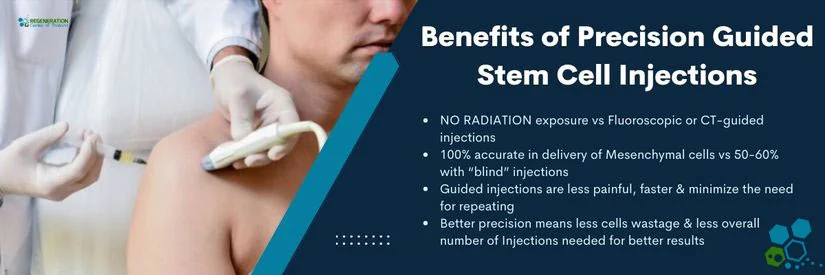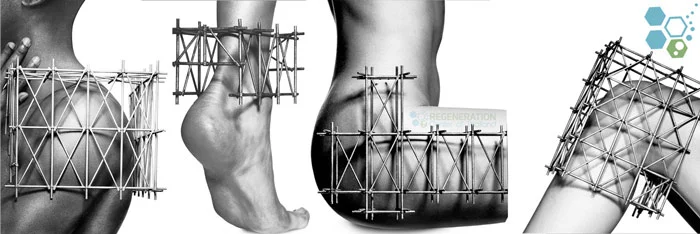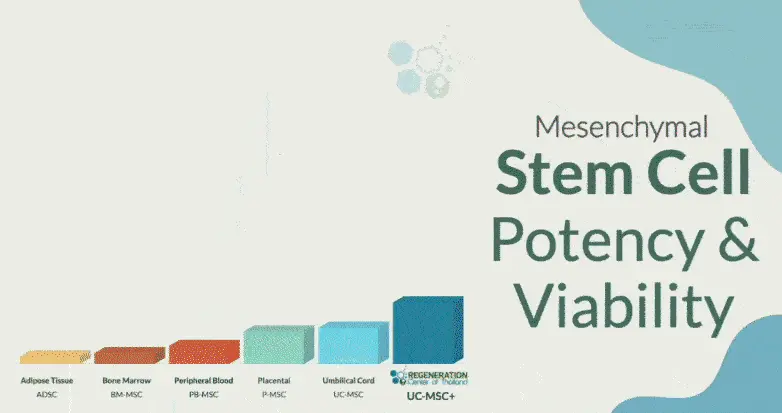Sports injuries are an unfortunate part of an active lifestyle. It can happen to professional or armchair athletes actively involved in amateur or professional sports. Injuries can happen anytime, anywhere, in a game or during practice. Depending on the severity of the injury, some cases will be pretty minor and heal on their own with a band-aid. In contrast, others are severe and will require invasive surgical intervention to repair the damage. If left untreated, sports-related injuries often result in the gradual breakdown of overall stable function due to overcompensation by the healthy joints and muscles.
Modern Approach to Treating Sports-Related Injuries
Over several years, a new dimension in sports stem cell science has emerged globally. Internationally published use of cell therapies by many high-profile athletes using cultured stem cells to maintain a competitive edge or expedite recovery from an injury has become quite common. Being severely injured while playing sports like basketball, baseball, football, soccer & rugby is very common. Nearly 9 out of 10 people who play sports will at one time get hurt. Sometimes, accidents during sports lead to multiple injuries that require long recovery periods and at a costly price. For some athletes who earn a living playing professional sports, the sudden depression and lack of long-term mobility can result in the permanent end of their sports careers. Such an abrupt change can be traumatic for the athlete and their loved ones. Modern medicine has come a long way to treat serious sports injuries. PRP Therapy and Regenokine / Orthokine treatments have been the go-to treatment for professional athletes whose income depends on rapid healing to pre-injury form in a very short period.
Enhanced Orthokine & Regenokine Therapy
Stem cell treatments for sports injuries are one of the best examples of medical breakthroughs today. Two German doctors named Dr. Reinecke and Dr.  Wehling created the first Orthokine (Europe), also called Regenokine (United States) treatment protocol that became the basis in the treatment for hip injuries, meniscus tear treatment, cell therapy for arthritis, fingers or wrists to treat torn ACL, MCL cartilage damage caused by sports-related injuries. Our unique UC-MSC cell regeneration treatment is perfect for people who want to be treated quickly and in a minimally invasive/non-surgical manner. Stem cell therapies are not new. In modern medicine, stem cells have been used for over 45 years to treat many severe and non-serious medical conditions such as SLE/Lupus, diabetes, COPD, after heart attacks, and even in general cosmetic treatments for anti-aging. In the last 5-10 years, however, there has been a massive trend towards using stem cells in sports medicine to treat various injuries such as sarcopenia, golfer elbow, femoral nerve injury, chronic muscle injuries, shoulder injuries, torn tendons & ligament damage.
Wehling created the first Orthokine (Europe), also called Regenokine (United States) treatment protocol that became the basis in the treatment for hip injuries, meniscus tear treatment, cell therapy for arthritis, fingers or wrists to treat torn ACL, MCL cartilage damage caused by sports-related injuries. Our unique UC-MSC cell regeneration treatment is perfect for people who want to be treated quickly and in a minimally invasive/non-surgical manner. Stem cell therapies are not new. In modern medicine, stem cells have been used for over 45 years to treat many severe and non-serious medical conditions such as SLE/Lupus, diabetes, COPD, after heart attacks, and even in general cosmetic treatments for anti-aging. In the last 5-10 years, however, there has been a massive trend towards using stem cells in sports medicine to treat various injuries such as sarcopenia, golfer elbow, femoral nerve injury, chronic muscle injuries, shoulder injuries, torn tendons & ligament damage.
A stem cell is essentially the building block of the human body. It is capable of subdividing for a specific period. When the cells divide, they can also transform into any cells in the human body, which is then capable of helping the body self-renew or heal. To put it simply, the body uses the stem cells to help repair itself. The cells mimic the body’s natural way of healing. The stem cells come from the patient’s body (bone marrow), which eliminates the risk of adverse reactions in the natural process (autologous). We can also extract, test, and expand stem cells from peripheral blood, adipose tissue (fat), and dental pulp. For candidates who are not eligible for autologous therapy, we can offer expanded allogeneic stem cells typically derived from umbilical cord tissue (UC-MSC), Umbilical Cord blood (UCB-MSC), or placenta-derived mesenchymal stem cells.

Once the cells are tested and expanded [MSC+] using our proprietary cell culture medium and cell-specific growth factors, the expanded cells are then delivered back to the patient using a multi-stage delivery system into multiple areas near the injury and timed full-body release, allowing the injury regeneration to start.
After Stem Cell Treatment for Sports Injuries
Benefits of Having Regenokine / Orthokine:
- 100% Safe Uses your natural healing cells
- Non-surgical Treatment
- Restore healthy Joint functions
- Protect preserves healthy cartilage
- Safe for use in all joints of the Body
- Reduce pain
- Increases mobility
- No movement restrictions or activity limits during treatment in Bangkok

Depending on the severity of the injury, the healing process begins immediately upon the delivery of cells to the body. The most immediate relief can be felt in the lack of pain that occurs post-treatment. The effectiveness of the entire treatment protocol for injury-related neuropathy, stem cells for rotator cuff, and DDD will still mainly depend on the patient’s ability to follow post-treatment care coupled with foods that are good for joint health and a rehabilitation program to strengthen the affected areas.[1]

Non-Surgical Therapy for Sports Injuries in 2025
Total Cell Infusions for Sports-Related Injuries: The number of infusions per stage will depend on the type and severity of the Injury and the existence of other health conditions.
Type of Cells Injections and Delivery Method:
MSC+ Stem cells will be derived with paracrine cell signaling, exosomes, growth factors & Platelet Rich Plasma. The stem cells are extracted, tested, and expanded in an Isolated closed environment system. For patients with severe conditions, age, or injuries, autologous cells may not be a good option and might require therapeutic-grade allogeneic cells. [2]. The injections are usually delivered directly into the area of injury/damage, intravenously, intrathecally, via fluoroscopy-guided infusions (hospital setting only) or angiography. Depending on the injury (Rotator Cuff Injuries longer), a combination of delivery may be required depending on what our orthopedic stem cell doctors feel is necessary for the patients to achieve the best results.[3]
Post-Treatment Rehabilitation: Physical Rehabilitation services in Bangkok after your treatment are available, depending on your availability to stay in Thailand post-treatment. The Regeneration Center also offers complete physical rehabilitation and recovery packages in Chiang Mai (North), Bangkok, Phuket or Koh Samui. A full or part-time physical therapist, with total weights, a swimming pool, balance aids & other physical rehabilitation tools and techniques, is vital in helping to expedite the natural healing process. Smoking is also HIGHLY discouraged before, during, or after any treatments as it hinders blood circulation/healing. The physical rehabilitation package is optional and available to candidates at an additional cost as needed (up to 2-5 hours per day, seven days per week) . Medical visas, recovery hotels, or furnished apartments for long-term stays can also be provided upon special request.
TREATMENT RISKS & PRECAUTIONS
Please note that not all patients are suitable candidates for treating sports injuries with Orthokine or Regenokine therapy. Patients with severe joint or muscle damage, chronic injuries, advanced degenerative conditions,burst fractures or other significant health concerns might not be good candidates for treatment.Cost of Stem Cell Therapy for Athletic Injuries
Unfortunately, due to travel and mobility restrictions, not everyone makes a candidate for our sports injuries stem cell protocol. Approximately 25% of all requests are not approved for treatment, usually because of underlying medical conditions or because the age/damage of the injuries is beyond acceptable treatment times. We request all potential candidates submit their medical history with recent lab results so that they can be appropriately analyzed. Our orthopedic stem cell team will need copies of your CT and MRI scans to help us determine what is required and what stem cell treatment will cost. Scans and lab results under three months old are required for precise prognosis and treatment recommendations.
Our unique enhanced cell therapy for treating sports-related injuries will require a minimum of 10-12 days. However, severe/multiple conditions can take up to 14 days at our Orthopedic treatment center in Bangkok. Due to varying degrees of injuries, our orthopedic team must evaluate any potential candidates before a detailed treatment plan can be provided. The final treatment recommendations will include all medical-related information, the total treatment length, and fixed medical-related expenses (excluding accommodations or flights).
To learn more about our unique enriched stem cell transplants, please contact us today.
Published Clinical Citations
[1] ^ Alvarez-Camino, Juan-Carlos, Eduardo Vázquez-Delgado, and Cosme Gay-Escoda. 2013. Use of autologous conditioned serum (Orthokine) for the treatment of the degenerative osteoarthritis of the temporomandibular joint. Review of the literature. Medicina oral, patologia oral y cirugia bucal, no. 3 (May 1). https://www.ncbi.nlm.nih.gov/pubmed/23524415
[2] ^ Harada, Yoshifumi, Ken-Ichi Furukawa, Toru Asari, Shunfu Chin, Atsushi Ono, Toshihiro Tanaka, Hiroki Mizukami, et al. 2013. Osteogenic lineage commitment of mesenchymal stem cells from patients with ossification of the posterior longitudinal ligament. Biochemical and biophysical research communications, no. 3 (December 19). doi:10.1016/j.bbrc.2013.12.080. https://www.ncbi.nlm.nih.gov/pubmed/24361881
[3] ^ Jorjani, J, D Altmann, R Auen, C Koopmann, B Lyutenski, and D C Wirtz. 2013. [Medium- to long-term follow-up after anterior cruciate ligament rupture and repair in healing response technique]. Zeitschrift fur Orthopadie und Unfallchirurgie, no. 6 (December 17). doi:10.1055/s-0033-1350874. https://www.ncbi.nlm.nih.gov/pubmed/24347411


